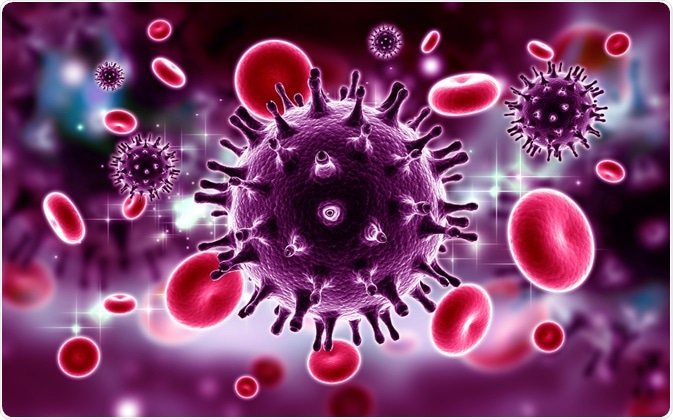Drug resistance is the genetic evolution of microorganisms and cancers to avoid elimination by drugs. It is an unavoidable fate that makes the discovery of new antibiotics a pressing concern for combating infectious disease.

Image Credit: Lightspring/Shutterstock.com
New approaches to drug discovery are required to identify novel agents and slow the rate of resistance. However, negligible financial returns for pharmaceutical companies slow their investment in this field.
What is Drug Resistance?
The loss of effectiveness of a drug to treat a disease over time is known as drug resistance. It is commonly associated with microorganisms and cancers which acquire changes over time to develop resistance to antimicrobials and antineoplastics. Antibiotic resistance is the most pressing public health concern, with mounting fears of entering a post-antibiotic era.
Without antibiotics, common infections would be more difficult to treat and routine surgeries and therapies would become high risk and even deadly. It has been recorded that more than 2 million North Americans present with antibiotic-resistant infections every year, leading to 23,000 deaths. As the number of resistant microorganisms increases every year, it clearly needs to be a global priority to develop new drugs that can better target these pathogens.
The increase of resistant pathogens is due to several factors. Overuse of antibiotics as a result of overprescription by physicians to patients and excessive use in livestock are big contributors. Public campaigns to educate individuals on their proper use, as well as surveillance strategies to identify current antibiotic resistance is necessary to manage and slow this reality.
Difficulties in Drug Development
Although the demand for novel antibiotic drugs is high, fewer pharmaceutical companies are taking on their development than ever before. Between 2004-2009, only one single drug per year was being released. The development of any pharmaceutical is costly, but with the inevitability of drug resistance, these therapeutics will ultimately fail. Antibiotics and other antineoplastics have therefore become unattractive investments.
Antibiotic Stewardship, a government scheme to monitor the use of antibiotics and limit their prescription, is one way to safeguard antibiotic efficacy. Although this scheme would slow antibiotic resistance, it guarantees reduced profit margins on antibiotics and poses no incentives for pharmaceutical investors. This explains the lack of interest in antimicrobial research and development.
Difficulties in identifying novel drug targets, and modified antibiotics succumbing to the same mechanisms of resistance as their predecessors, again contributes to the lack of draw to these drugs. There are ethical challenges in administering multi-drug resistant bacteria to clinical trial volunteers, and in giving an unlicensed antibiotic, as opposed to a known drug, to critically ill patients. These barriers, along with the complicated regulatory process, contribute to the poor incentives for pharmaceutical companies to pursue this field.
One important assumption is that resistance to drugs is an unavoidable genetic process that evolves. Pharmaceutical companies need to build this invertibility into their robust plans for developing novel drug agents.
Approaches for Drug Discovery
With resistance emerging faster than the development of new antibiotics, pharmaceutical companies must explore new avenues for the identification of novel agents.
Traditional screening methods that screen a library of small molecules and natural products often fail because of the limited diversity of compounds. The molecules often favor the target of eukaryotic cells rather than prokaryotic cells and are therefore irrelevant to antibiotic discovery. Procuring natural products from inaccessible environmental niches, for example, deep-sea vents are becoming more commonplace as the technology for culturing bacteria in these environments becomes more accessible.
An iChip which allows culturing of microbial species in their natural environment has allowed the discovery of the novel antibiotic teixobactin. A metabolite released by bacteria in soil was found to inhibit peptidoglycan synthesis in gram-positive bacteria. This technology holds promise for the discovery of further chemical entities to go into drug development.
Understanding microbial genomics and mechanisms of resistance are essential to develop new drug targets. Designing a drug that has multiple targets is beneficial, to minimize the survival of pathogens after drug administration and prevent resistance. Anti HIV-1 drugs utilize this tactic by simultaneously targeting reverse transcriptase and proteases.
Using metagenomics and bioinformatics to identify conserved microbial genomic regions associated with pathogenicity, helps direct drug development to a specific species. Specificity prevents off-target destruction of neighboring microorganisms. It reduces the risk of neighboring strains from developing resistance and passing on these genes by horizontal gene transfer to the target strain. Genomic studies to assess the mutability of drug binding regions are also beneficial to predict the rate of resistance.
Using combinations of drugs which act in synergy is another strategy for slowing resistance, the probability of resistance to two compounds is less than for one. Combinational drugs are successfully used to treat HIV, cancer, and tuberculosis.
Eliminating tolerable and persistent populations of bacteria, which lead to resistance, is another beneficial method for reducing resistance. The challenge here is their tolerability to all antimicrobials. Therefore targeting them in altered physiological states, for example in a biofilm, is a suggested strategy.
The development of resistance in a drug is an unavoidable fate that often makes drug discovery of antibiotics uneconomic, despite the global need for their development.
Alternative screening methods, metagenomics, and the use of combinations of synergistic drugs have created new avenues for pharmaceutical companies to explore, which may enhance their development. Market entry rewards and other monetary incentives to these organizations is essential to bridge the gap between antibiotic demand and discovery.

Image Credit: RAJ CREATIONZS/Shutterstock.com
Sources
- Hadley, C., 2004. Overcoming resistance. EMBO reports 5(6), pp.550-552.
- Jackson, N., Czaplewski, L., and Piddock, L., 2018. Discovery and development of new antibacterial drugs: learning from experience?. Journal of Antimicrobial Chemotherapy, 73(6), pp.1452-1459.
- Parish, T., 2018. Steps to address anti-microbial drug resistance in today’s drug discovery. Expert Opinion on Drug Discovery, 14(2), pp.91-94.
- Ribeiro da Cunha, B., Fonseca, L. and Calado, C., 2019. Antibiotic Discovery: Where Have We Come from, Where Do We Go?. Antibiotics, 8(2), p.45.
- Who.int. 2020. Antimicrobial Resistance. [online] Available at: <www.who.int/news-room/fact-sheets/detail/antimicrobial-resistance> [Accessed 14 October 2020].
Further Reading